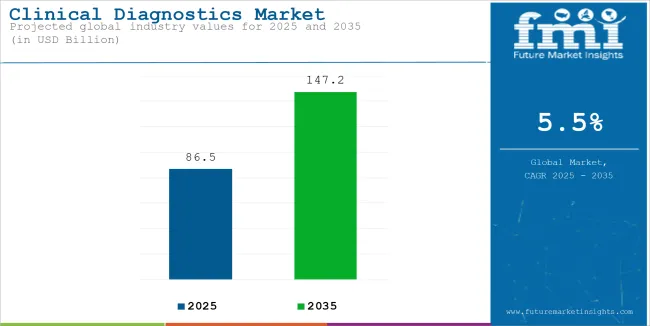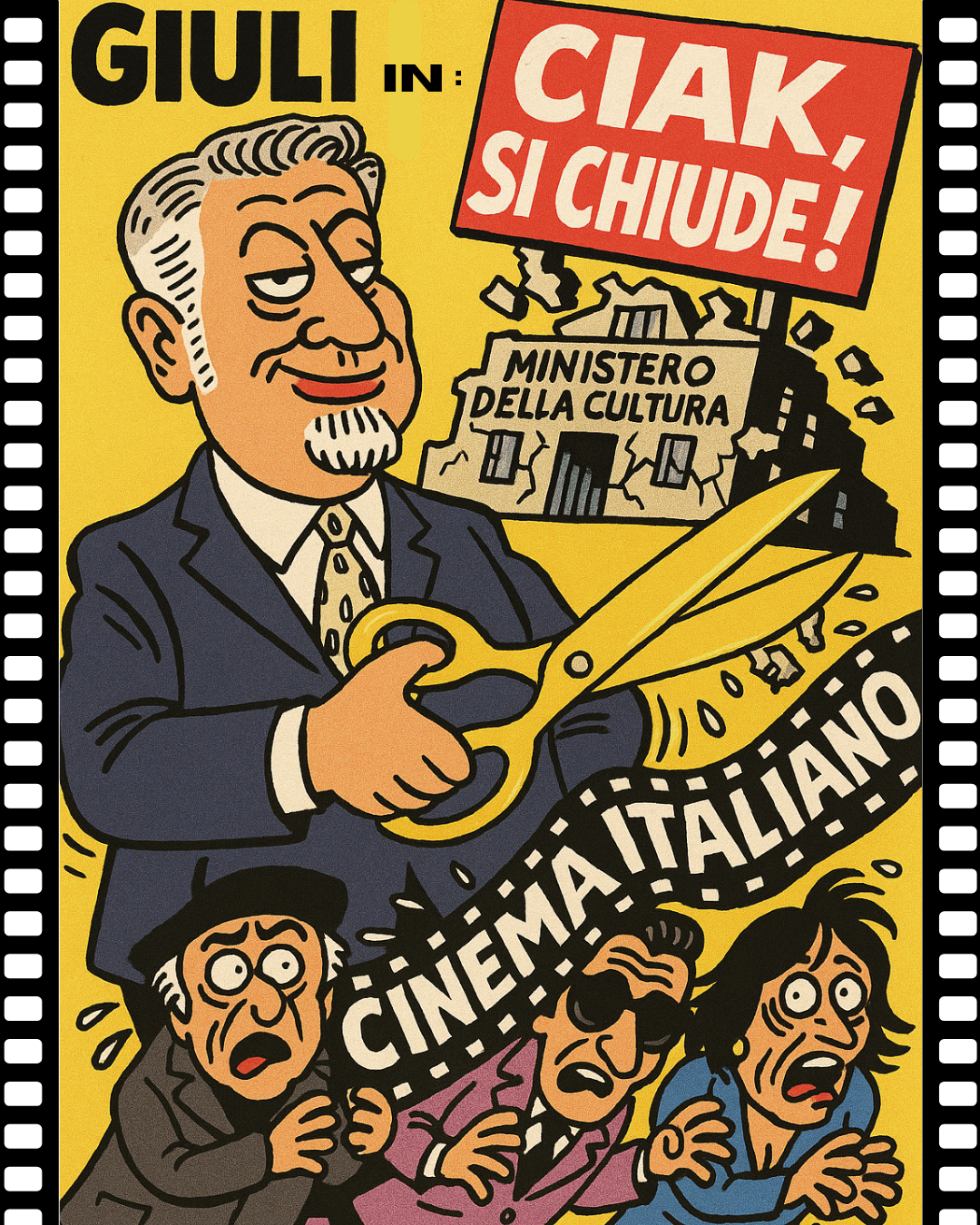CIAK, SI CHIUDE!
Un popolo totalmente a digiuno di cultura è un popolo senza spirito critico, e quindi controllabile.
Non serve una scienza occulta per capirlo: è esattamente ciò che vogliono i signori seduti sugli scranni più decisivi del governo di questo paese.
E ci voleva davvero del talento — credetemi — per tirare fuori dal cilindro una bestialità simile. Nel silenzio generale, nel disinteresse generale. Eppure è successo.
Sì, perché se Sangiuliano era già riuscito a coprirsi di vergogna e ridicolo, il suo successore, Giuli, è riuscito nella sacra impresa di fare addirittura meglio.
Un fuoriclasse del disastro.
Un talento raro nel rendere il Ministero della Cultura un paradosso vivente: quello di chi chiede, con convinzione, di tagliare i fondi alla cultura che dovrebbe tutelare.
E qui, signore e signori, la maschera cade del tutto: nessun pregiudizio politico, solo fatti.
C’era la possibilità — questa volta sì — di ribaltare l’idea di un centrodestra privo di cultura, visione e passione per le arti.
E invece no: dignità e credibilità vengono sacrificate in nome di una manovra “di bilancio” che odora di restaurazione culturale.
Una retromarcia verso le retrovie, come non se ne vedevano da anni.
E a farne le spese, ancora una volta, sarà il Cinema italiano.
Siamo nel pieno della bufera: la Ragioneria dello Stato ha bloccato il piano del MIC che avrebbe dovuto reintegrare di 100 milioni il Fondo Cinema 2026, già falcidiato dalla legge di bilancio.
Fin qui, tutto grave ma “ordinario”.
Poi arriva il colpo di scena: il 11 novembre, Repubblica svela una mail del 17 ottobre indirizzata al Ministero dell’Economia, nella quale sarebbe stato lo stesso gabinetto di Giuli a suggerire di tagliare di circa un terzo il Fondo per lo sviluppo del cinema e dell’audiovisivo.
Sì, avete letto bene.
Il taglio non arriva da fuori. Parte da dentro.
Dal Ministero stesso.
Dal ministro stesso.
Un taglio di circa un terzo, con una riduzione che porterebbe il fondo dai 696 milioni attuali a circa 400 milioni nel 2026, e quasi 300 milioni nel 2027.
Un ritorno al 2017, quando il settore arrancava, ma con un contesto oggi infinitamente più fragile.
Ora ditemi voi: da che mondo è mondo, quale ministro chiede tagli al proprio ministero?
O è follia, o è una linea precisa. E in entrambi i casi, è un disastro annunciato.
E qui, sì, ci piace “pensare male”. Perché è facile prevedere dove andremo a finire:
Il cinema italiano verrà ulteriormente penalizzato, lasciando spazio alle grandi produzioni internazionali — soprattutto statunitensi — che controllano i flussi economici e mediatici.
Meno fondi significa meno sviluppo, e quindi un arretramento culturale e industriale: sopravviverà solo il cinema d’incasso facile, mentre il cinema d’autore scomparirà lentamente dai nostri schermi.
Meno produzioni sul territorio, meno indotto, meno promozione per l’Italia stessa. Sparisce il marketing territoriale, resta solo un contenitore vuoto di storie importate.
Addio ai giovani autori, ai tecnici, agli interpreti emergenti, ai ricercatori e agli studenti che ogni anno escono dai nostri atenei sognando un’industria viva.
Il loro futuro è già scritto: disoccupazione culturale.
Era difficile vent’anni fa. Oggi è impossibile.
Un finale amaro che sa di titoli di coda per il cinema italiano.
Riusciranno i nostri eroi dell’opposizione a farsi sentire?
Mah.
Da fuori, possiamo solo urlare il nostro disgusto e la nostra rabbia.
Perché la cultura, in questo paese, viene ignorata quando le cose vanno bene e violentata quando vanno male.
E per favore, basta scuse: non è colpa delle piattaforme, né dei social, né dell’intelligenza artificiale.
Qui la colpa è una sola.
Ed è fottutamente politica.
Ed è profondamente umana.
Fine.
Ma senza applausi.
#CinemaItaliano #CulturaSottoAttacco #Giuli #MIC #TagliAllaCultura #CiakSiChiude #RetromarciaVersoLeRetroVie #PoliticaCulturale #DifendiamoIlCinema🎬 CIAK, SI CHIUDE!
Un popolo totalmente a digiuno di cultura è un popolo senza spirito critico, e quindi controllabile.
Non serve una scienza occulta per capirlo: è esattamente ciò che vogliono i signori seduti sugli scranni più decisivi del governo di questo paese.
E ci voleva davvero del talento — credetemi — per tirare fuori dal cilindro una bestialità simile. Nel silenzio generale, nel disinteresse generale. Eppure è successo.
Sì, perché se Sangiuliano era già riuscito a coprirsi di vergogna e ridicolo, il suo successore, Giuli, è riuscito nella sacra impresa di fare addirittura meglio.
Un fuoriclasse del disastro.
Un talento raro nel rendere il Ministero della Cultura un paradosso vivente: quello di chi chiede, con convinzione, di tagliare i fondi alla cultura che dovrebbe tutelare.
E qui, signore e signori, la maschera cade del tutto: nessun pregiudizio politico, solo fatti.
C’era la possibilità — questa volta sì — di ribaltare l’idea di un centrodestra privo di cultura, visione e passione per le arti.
E invece no: dignità e credibilità vengono sacrificate in nome di una manovra “di bilancio” che odora di restaurazione culturale.
Una retromarcia verso le retrovie, come non se ne vedevano da anni.
E a farne le spese, ancora una volta, sarà il Cinema italiano. 🎞️
Siamo nel pieno della bufera: la Ragioneria dello Stato ha bloccato il piano del MIC che avrebbe dovuto reintegrare di 100 milioni il Fondo Cinema 2026, già falcidiato dalla legge di bilancio.
Fin qui, tutto grave ma “ordinario”.
Poi arriva il colpo di scena: il 11 novembre, Repubblica svela una mail del 17 ottobre indirizzata al Ministero dell’Economia, nella quale sarebbe stato lo stesso gabinetto di Giuli a suggerire di tagliare di circa un terzo il Fondo per lo sviluppo del cinema e dell’audiovisivo.
Sì, avete letto bene.
Il taglio non arriva da fuori. Parte da dentro.
Dal Ministero stesso.
Dal ministro stesso. 🤯
Un taglio di circa un terzo, con una riduzione che porterebbe il fondo dai 696 milioni attuali a circa 400 milioni nel 2026, e quasi 300 milioni nel 2027.
Un ritorno al 2017, quando il settore arrancava, ma con un contesto oggi infinitamente più fragile.
Ora ditemi voi: da che mondo è mondo, quale ministro chiede tagli al proprio ministero?
O è follia, o è una linea precisa. E in entrambi i casi, è un disastro annunciato.
E qui, sì, ci piace “pensare male”. Perché è facile prevedere dove andremo a finire:
Il cinema italiano verrà ulteriormente penalizzato, lasciando spazio alle grandi produzioni internazionali — soprattutto statunitensi — che controllano i flussi economici e mediatici.
Meno fondi significa meno sviluppo, e quindi un arretramento culturale e industriale: sopravviverà solo il cinema d’incasso facile, mentre il cinema d’autore scomparirà lentamente dai nostri schermi.
Meno produzioni sul territorio, meno indotto, meno promozione per l’Italia stessa. Sparisce il marketing territoriale, resta solo un contenitore vuoto di storie importate.
Addio ai giovani autori, ai tecnici, agli interpreti emergenti, ai ricercatori e agli studenti che ogni anno escono dai nostri atenei sognando un’industria viva.
Il loro futuro è già scritto: disoccupazione culturale.
Era difficile vent’anni fa. Oggi è impossibile.
Un finale amaro che sa di titoli di coda per il cinema italiano. 🎞️💔
Riusciranno i nostri eroi dell’opposizione a farsi sentire?
Mah.
Da fuori, possiamo solo urlare il nostro disgusto e la nostra rabbia.
Perché la cultura, in questo paese, viene ignorata quando le cose vanno bene e violentata quando vanno male.
E per favore, basta scuse: non è colpa delle piattaforme, né dei social, né dell’intelligenza artificiale.
Qui la colpa è una sola.
Ed è fottutamente politica.
Ed è profondamente umana.
🎬 Fine.
Ma senza applausi.
#CinemaItaliano #CulturaSottoAttacco #Giuli #MIC #TagliAllaCultura #CiakSiChiude #RetromarciaVersoLeRetroVie #PoliticaCulturale #DifendiamoIlCinema











